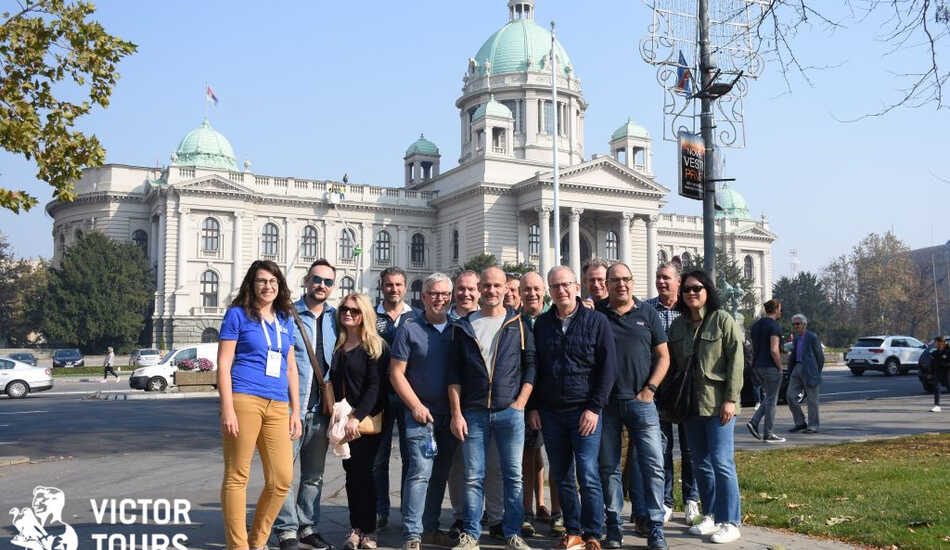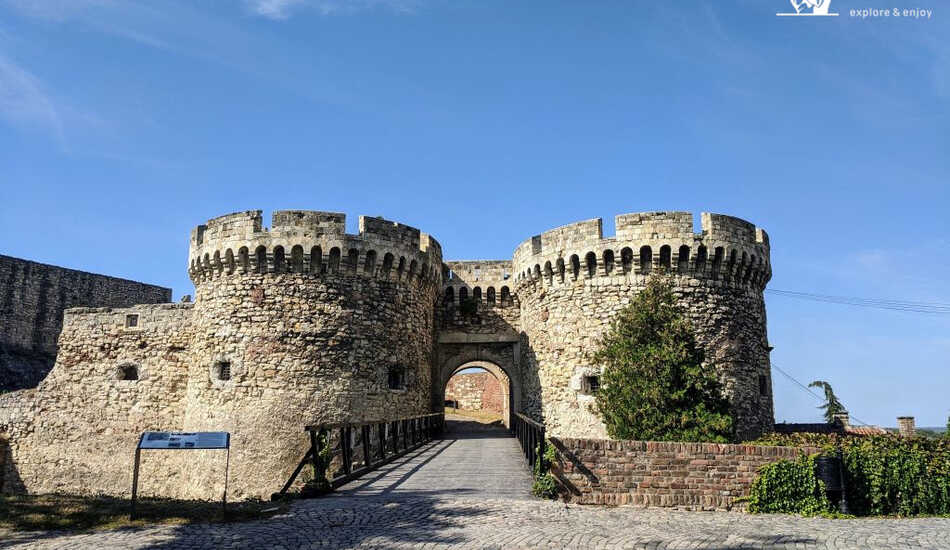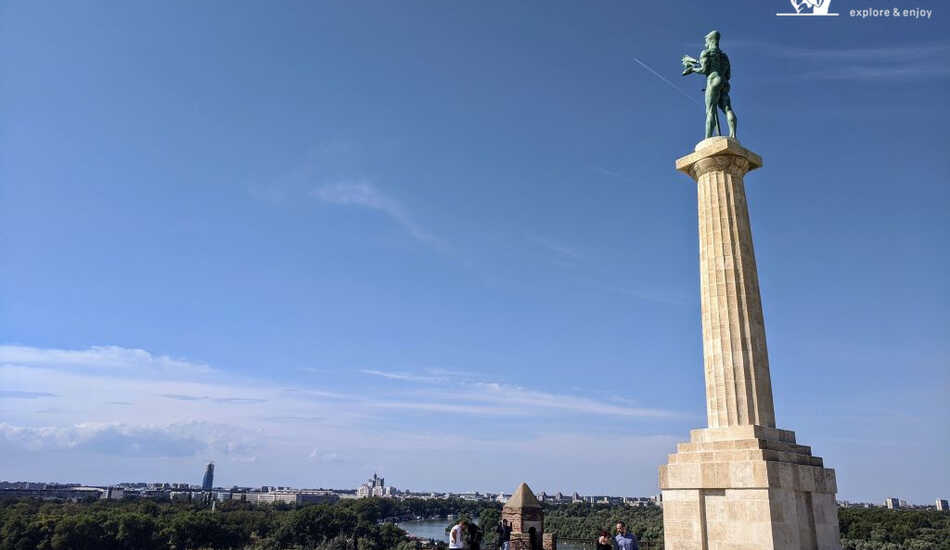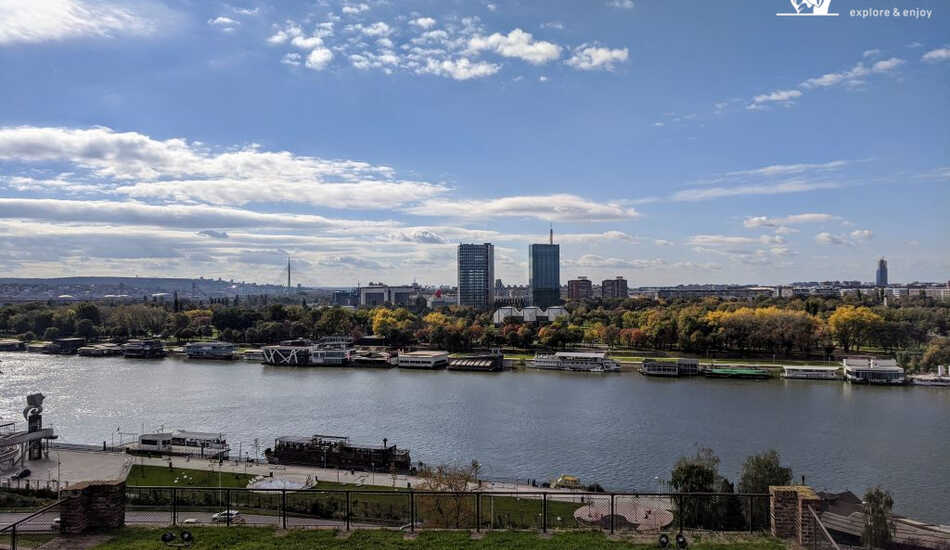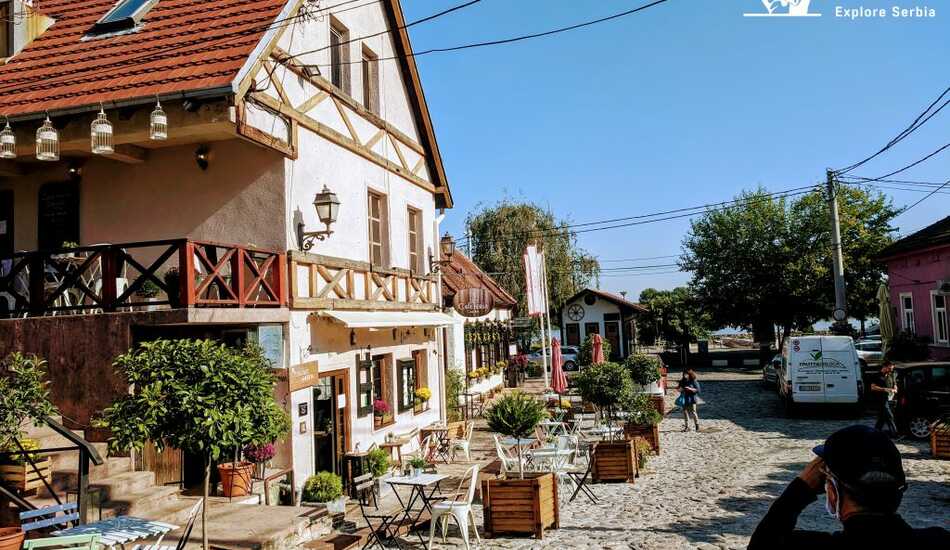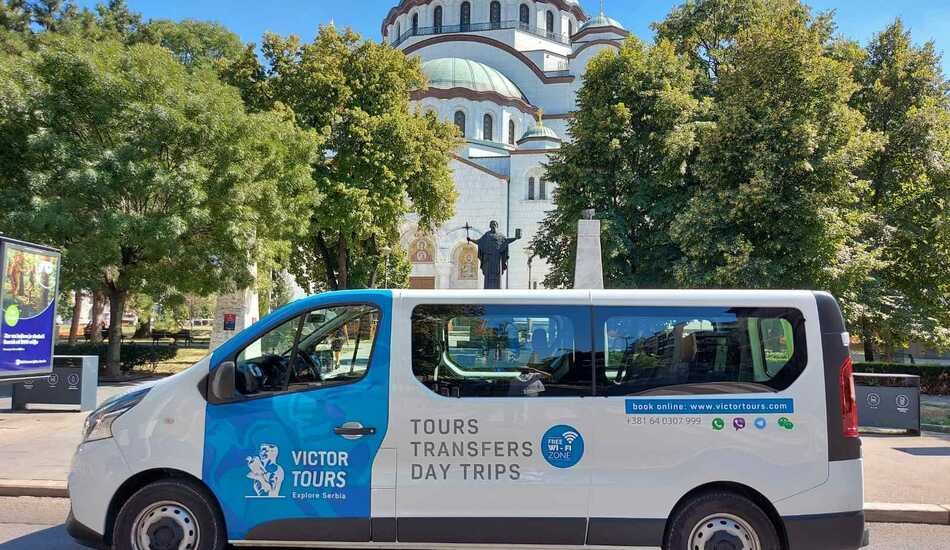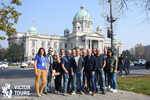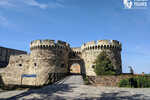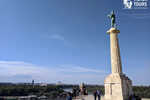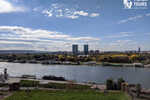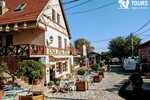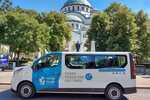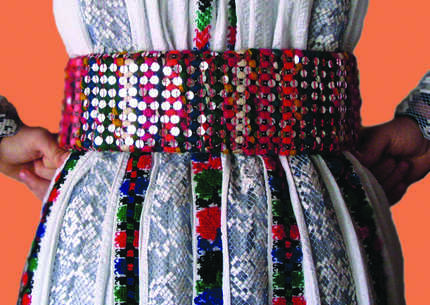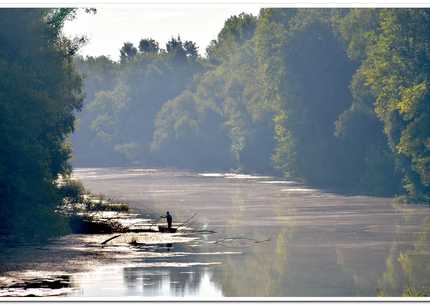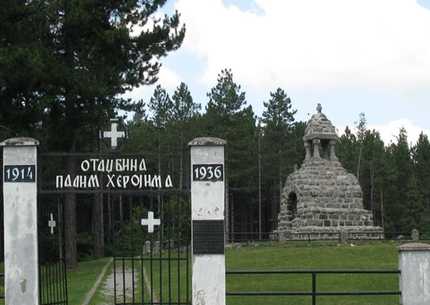Abstract:
A whole day, complete Belgrade experience. Explore everything that Belgrade offers in both the city center and surrounding areas. By combining a walking tour and a panoramic car tour, you will taste the entire city and the bigger picture of life in Belgrade. You will visit the Zemun neighborhood, Saint Sava Temple, Avala Mountain, and Avala Tower with live, professional guidance. Additionally, you’ll have a complete sightseeing tour of the city (Belgrade Fortress, New Belgrade, Old and New Royal Palaces, Serbian Parliament, a monument to Nikola Tesla, Republic Square, and much more…) For sure, the most comprehensive tour in Belgrade.Activities:
Hotel pick-upKalemegdan park & Belgrade Fortress
New Belgrade
Zemun neighborhood
Lunch break
Dedinje neighborhood
Saint Sava Temple
Hotel drop-off
Tour description:
Kalemegdan park & Belgrade Fortress: Your trip will begin with pick up from your hotel/accommodation in Belgrade. We’ll not stay in the vehicle for a long time since our first stop is Kalemegdan, the oldest and largest park in the city center, and the magnificent Belgrade Fortress. Starting from Leopold’s Gate, we will pass by the remains of the Roman castrum – Singidunum and the medieval walls built upon it – Zindan Gate, Despot’s Gate, Jakšića Tower, all dating back to the 15th century. We will visit two Orthodox churches in this part of the fortress: The chapel of St Petka and Ružica Church ( Virgin Mary Church ). Entering the Upper town ( Gornji grad ), we will see the magnificent sight of two rivers’ confluence: the Sava and the Danube.
The Victor monument: We will continue our walk through the Upper town: the Victor monument by world-renowned sculptor Ivan Meštrovic, one of Belgrade’s landmarks, the Roman well, the King’s gate, and the Sava promenade, the Damat Ali Pasha Tomb, Clock Gate, and Clock Tower. Passing by Military Museum and through Istanbul’s gate, we will leave the fortress behind us, entering Kalemegdan park again. There is a Monument of Gratitude to France by Ivan Meštrovic in the park and many busts representing the famous Serbian man of letters. Here we’ll enter the vehicle again and continue with our tour.
New Belgrade: Continuing with our tour, we’ll have a chance to see New Belgrade’s impressive modern architecture. Built as a new part of the town, after WWII and during the socialist regime, it has many remarkable buildings. Ex-Central Committee of the Communist Party, Federal Executive Council, also known as Palace of Federation, Genex Tower or Western Gate of Belgrade, Sava Center, one of the biggest congress halls in this part of Europe, etc. Even the famous MOMA museum from New York dedicated a special exhibition called “Toward a Concrete Utopia” to New Belgrade’s architecture. New Belgrade will show you this city’s different face, including the buildings architecturally similar to former Eastern block “brutalist” style and modern business buildings built in recent decades. Finally, we will pass by the restaurant “Novak,” owned by the famous tennis player Novak Đoković’s family, and the Belgrade Arena, the most important sports venue in this part of Europe.
Zemun neighborhood: After New Belgrade, we’ll reach Zemun, the northern area of Belgrade, characteristic of its Central European appearance, charming quarters, cobblestone streets, and fish restaurants on the Danube River banks. We’ll pass by Avijatičarski Trg, where the old city of Zemun begins. With the massive monument to WWII heroes, this square is surrounded by Zemun’s oldest elementary school building and the Air Force Ministry, one of the finest examples of modernism in pre-war Yugoslav architecture. We’ll continue with our ride through the main street called Gospodska Street, where we have a chance to see some beautiful examples of Zemun architecture: the Post Office, Hotel Central, Town Museum, the House with a Sundial, etc.
Following, we’ll leave the vehicle on the Danube bank and start our walking tour through the heart of old Zemun. But before that, we’ll take a short coffee break to refresh and enjoy the view. We’ll continue along the bank of the Danube River – Zemun Promenade, where numerous old fish restaurants have nested under the shade of the century-old plane trees. Passing by the oldest Orthodox church of St. Nicholas from the 17th century, we’ll climb the Gardos Hill – the heart of Old Zemun. Its curvy cobblestone streets and small houses will give you the impression that Zemun is a melting pot of Mediterranean and Middle European cultures.
When we reach the top of the hill, we’ll see the remains of the Zemun citadel that still stand together with The Millennium Tower in the center, Zemun’s central landmark. This romantic construction, built in a mixture of historical styles at the end of the 19th century, served to mark the most Southern point of the Austro-Hungarian empire. The majestic view from the top of the tower will leave you breathless: Zemun Old Town from above, but also the confluence of the two rivers and the Belgrade Fortress on the other side.
We’ll go down Gardos Hill to the town center and reach the Main City Square, where an everyday market is situated. Old buildings, including the Bishop’s Office and the Roman Catholic Church of the Blessed Virgin from the 18th century, surround the square. We’ll finish our walking tour here, enter the vehicle, and continue our ride.
Lunch break: New Belgrade’s Goce Delčeva street is famous in the city, nicknamed “The Valley of Hunger .” The road is full of fast food joints, offering “pljeskavica and ćevapi”, pizzas, Chinese food, plates of pasta, and different delicious fast food sales arrangement. Over here, fast food here is prepared and sold in all shapes and sizes, suitable for everyone’s taste. Here we’ll make a 30-minute lunch break.
Dedinje neighborhood: After we cross the Gazela Bridge, we’ll head for Dedinje – Belgrade’s most luxurious residential area. Here, we’ll see some of the most beautiful mansions in the city, perfectly nestled in the greenery and serenity of Topčider Hill. Your guide will give you some interesting information about the properties history and what was happening with them during the very turbulent 20th century. We’ll see the country’s biggest soccer stadium, “Rajko Mitić Stadium,” the home of Red Star Belgrade. Red Star is the last club from Eastern or Southern Europe to win the prestigious Champions League. Their biggest competitor, Partizan Belgrade, has a stadium just across a small hill. Their rivalry is lasting for more than 70 years.
Saint Sava Temple: Coming from Avala, we’ll visit the Vračar area, where we can see one of Belgrade’s most prominent landmarks – The Church of St. Sava (also known as St. Sava Temple), one of the largest Orthodox churches in the world. The Temple of St Sava has an enormous dome that you can see from all over the city. Size apart, the church is undeniably a highly impressive structure. Construction began in the 1930s at the site where the occupying Ottoman forces burned the relics of St. Sava (1175-1236). St Sava was the founder and the first archbishop of the independent Serbian Orthodox Church, and Serbians widely recognize him as one of the most important figures in Serbian history. Built in the Serbian-Byzantine style, the church occupies an area of 3500 m² at floor level, with an additional 1500 m² in the three galleries on the first level. At its highest point, the dome is 70 m in height, while the central gilded cross is an additional 12 m high, giving the Cathedral a total height of 82 m.
Slavija square: When we finish with the Temple, we’ll enter the vehicle one more time. Through Slavija Square, we will enter Nemanjina Street with almost all state governmental institutions: Government Building, the Ministry of Foreign Affairs, the General Staff of the Serbian Army, the Ministry of Railways, the Ministry of Finance, and the State Court, etc. – all being beautiful examples of Belgrade’s pre-war architecture.
The National Assembly and Terazije Fountain: After that, we’ll ride through Kralja Milana Street, the city’s artery where some significant buildings are situated, such as the Old and New Royal Palaces. We’ll pass by Nikola Pasic Square, with a monument to the first Prime Minister of the Kingdom of Yugoslavia. We’ll stop in front of the Parliament Building, where we will take a short break to take pictures. We will also see the Old and New Royal Palaces and hear stories about the two dynasties that ruled Serbia in the 19th and 20th centuries. Following, we’ll reach Terazije Square with its recognizable 19th-century white stone fountain and one of the most beautiful buildings in the city – the Moskva Hotel.
Republic Square: We’ll continue our ride and reach Republic Square, the heart of the capital, where the city’s most prestigious cultural institutions are situated. Here you will hear information about the most important buildings surrounding the Square: the National Museum and National Theatre, and a short explanation of why Prince Mihailo is one of the most important figures in Serbia’s modern history. Here we will see the National Museum and the National Theater and Opera buildings, with an equestrian monument to the most important city and state ruler from the 19th century – Knez Mihajlo.
The program ends at Nikola Pašić Square, near the Old Palace, from where passengers return to their hotels on their own.
